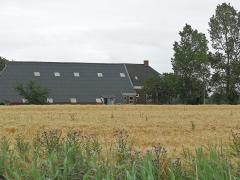Informative Inventory Report 2018
In the 2018 Informative Inventory Report (IIR) by the National Institute for Public Health and the Environment (RIVM), the Dutch emission data on transboundary air polluting substances have been published on the 1990–2016 period. For this report, PBL Netherlands Environmental Assessment Agency contributed to the calculation and reporting on air polluting emissions in the Netherlands.
Dutch emission trends
The report describes Dutch emission trends and levels of sulphur dioxide (SO2), nitrogen oxides (NOx), non-methane volatile organic compounds (NMVOC), ammonia (NH3), carbon monoxide (CO), particulate matter (PM), heavy metals, and persistent organic pollutants (POPs), over the 1990–2016 period. For almost all these substances, emission levels have decreased (except for NH3). The downward trend may be attributed, in particular, to cleaner fuels, cleaner car engines and to emission reductions in industrial sectors.
The Netherlands in compliance with EU emission ceilings
With a total 127.4 Gg in 2016, slightly more ammonia was emitted than in 2015, but the ceiling set by the European Union was met (128 kilotons). The increase in ammonia emission was mainly caused due to an increase in the number of dairy cows. This increase of emissions was partly countered due to an increase in low emission housing systems for pigs and poultry.
Emissions of nitrogen oxides continues to decrease slightly; the Netherlands are, therefore, complying with the ceilings in this regard. However, the total nitrogen oxides emissions between 1990 and 2015 have been adjusted significantly upwards with 29.2 Gg in 2015. Emissions of sulphur dioxides and non-methane volatile organic compounds continue to decrease slightly; the Netherlands are, therefore, complying with the ceilings in this regard.
Besides the substances mentioned above, the report also includes emissions of carbon monoxide, particulate matter, heavy metals and persistent organic pollutants. The emissions of most of these substances have decreased during the 1990 – 2016 period. The downward trend may, in particular, be attributed to cleaner fuels, cleaner car engines and to emission reductions in industry.
Authors
Specifications
- Publication title
- Informative Inventory Report 2018
- Publication date
- 9 June 2018
- Publication type
- Publication
- Publication language
- English
- Product number
- 3263




